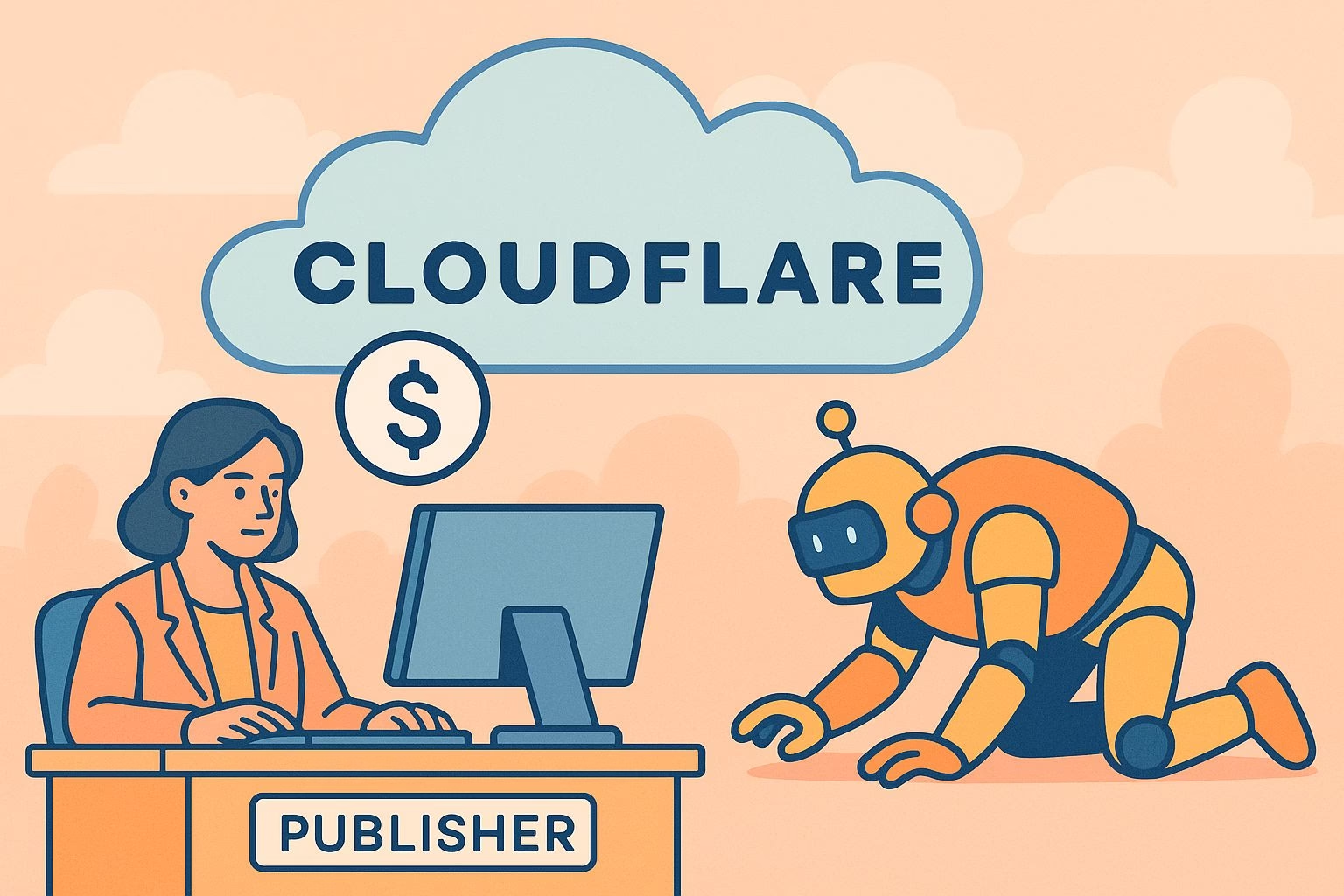Cloudflare’s Pay‑Per‑Crawl Model Could Shift AI Content Ecosystem
Web content creators have long watched AI models scrape their sites without revenue or credit. Now, Cloudflare is offering pay‑per‑crawl controls to help publishers regain power.
That’s a potential turning point in how AI sources training data. We’ll explore:
-
What pay‑per‑crawl means and why it matters
-
Reactions from publishers and AI firms
-
Long-term implications for content, access, and costs
Regaining Control Over Web Data
AI systems rely on crawling the open web, gathering news articles, blog posts, and forum threads, without returning referrals or ad traffic. Publishers lose visibility and earnings, while models get rich training material. Cloudflare’s move changes that.
With this new offering, site owners can allow, block, or charge for crawling. That puts publishers back in the driver’s seat. Major outlets like Condé Nast, AP, Reddit, and Pinterest endorse it. For them, this could mean monetizing data use or enforcing stricter access controls.
Turning a standard tool into a monetization lever could reshape data sourcing. Publishers regain leverage, and AI developers face choices: pay for quality or scrape risk-free.
Industry Reactions
Publishers are treating this as a way to regain agency. With declining ad revenue and fewer referrals due to AI-generated summaries, this tool offers a lifeline. Paying for crawl access could replace lost income and reduce “stealth scraping” by bots masquerading as users.
From the AI industry side, initial concern has emerged. Some models aim for exhaustive datasets. Adding costs and complexity could hinder smaller players who rely on inexpensive training material. But others see opportunities to build partnerships with content owners for curated, licensed data, more reliable and legally sound than scraping.
Cloudflare’s tool isn’t just technical, it’s strategic. It signals a shift toward compensating creators directly or losing access.
Potential Effects on the AI Ecosystem
In the short term, we may see publication sites changing crawl settings: some free, some paid. Larger players might strike licensing deals with publishers or pay-as-you-go access. Smaller firms could face cost barriers, raising entry thresholds in the AI market.
Longer-term, this may spawn a data marketplace. Publishers license their content, AI developers build models on verified datasets, and platforms facilitate exchanges. If successful, this ecosystem could provide transparency, traceability, and revenue. But if fragmented, training data may splinter, and models perform better in some domains than others, depending on access.
Publishers who monetize access might fund more journalism or invest in editorial quality. That’s a plus. But access fees may also reinforce disparities; small creators could be left behind.
Strategic Guidance for Stakeholders
For publishers: Start experimenting with crawl control. Set tiers, free for academic or nonprofit use, paid for commercial developers. Monitor crawl data, view revenues, and test pricing. Strong analytics will inform value-driven tiers.
For AI developers: Audit your data sources. Identify where you crawl and under what terms. Build partnerships with publishers where content depth matters, especially niche or expert content. Allocate budget for data procurement and negotiate fair licensing.
For platforms: Transparency matters. Publicize your data ingestion strategies. Disclose payment terms with publishers. That builds trust with stakeholders and regulatory bodies concerned about both content misuse and access equity.
Balancing Access, Fairness, and Innovation
Intellectual property and access tensions are not new, but AI adds complexity. Scraping raises copyright concerns; pay‑per‑crawl offers transactional clarity but risks fragmentation. Fair access versus monetization is a fine line.
Partial pay systems might emerge, like subscriptions for crawlers. Perhaps large publishers open via API at cost, smaller sites remain free or discovery-only. Regulations may step in to ensure noncommercial data-driven research remains viable.
Community enforcement will be key. Developers and publishers may underestimate database rules without transparent, enforceable guidelines. Consortia or standards groups might help codify acceptable practices.
What’s Next
Cloudflare’s tool is live. Early publisher adoption will set the tone. Is traffic blocked or monetized? Will AI firms negotiate?
If paid access becomes widespread, we’ll see pricing benchmarks emerge, $0.01 per crawl? $0.10? Will microtransactions scale or become overhead?
Regulators may weigh in. Antitrust or copyright bodies could evaluate if pay‑per‑crawl agreements limit competition or access to public information. Balance is crucial.
Rethinking the Web‑AI Relationship
Cloudflare has given us a chance to reset the AI–content balance. Publishers get monetization and control. AI firms face new complexity, but may gain clarity and legitimacy from choosing licensed, high-quality data.
That feels like progress. Instead of stealthy scraping and growing distrust, we could have a structured, sustainable data economy supporting both AI innovation and journalism funding. Both sides stand to win, if we build smartly.

